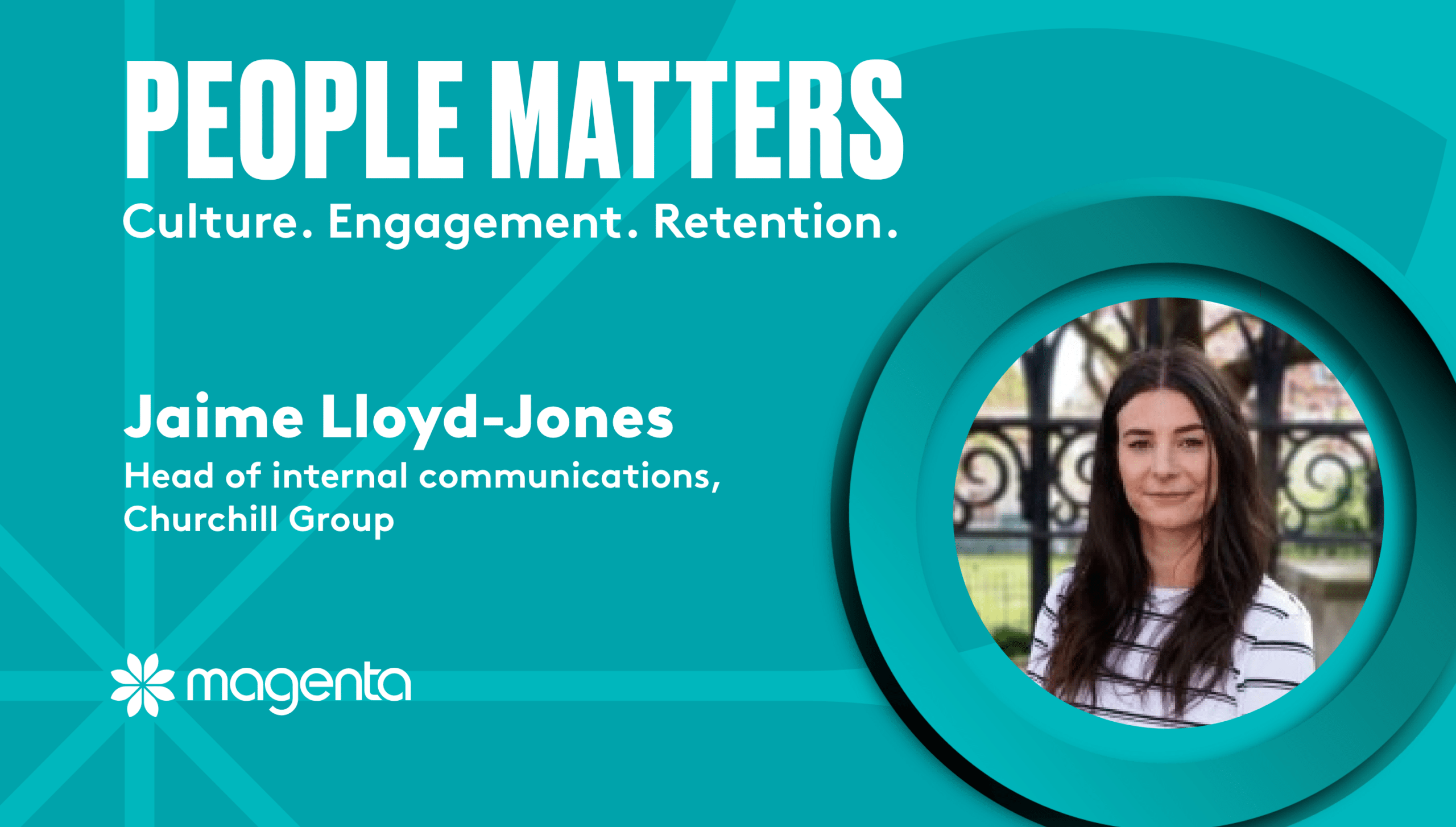This week we talked with Jaime Lloyd Jones, head of internal communications at the Churchill Group about her role in cultivating a successful internal culture and how to engage the workforce in the businesses goals.
What are the main drivers for conflict in the workplace? Can you give some examples?
A lot of workplace conflict can be traced back to some form of miscommunication. This could include cases where people don’t know the full story and base their conclusions on a small nugget of information or just one aspect of what somebody is working on. And we see this at many levels – between line managers and their teams, and peers within teams.
Miscommunication can also be subtle things like tone and emotion that come across differently in emails. Look at the method you are communicating in. In some cases, a call of face-to-face conversation might be better than sending a blunt message over email.
I’ve been on the end of this myself in a previous job, where a direct and short email made me feel quite guarded and second guess the situation in a negative way. A short Teams message follow up could have had a softening impact – after a short conversation I understood the issue better and no longer felt guarded. There are many communications tools at our disposal, so think about which ones work best and how several can be used to handle specific situations to engage the workforce the right way.
What are the impacts caused by workplace conflict?
If conflicts go unresolved, they have the potential to disrupt other team members and negatively impact company culture. Personality clashes can also dent productivity if a mindset of ‘I won’t do what they ask me to do’ sets in.
Employees should be able to resolve conflict between themselves. Not doing so, and going to someone’s line manager first, can actually be quite disruptive and make the situation worse. Colleagues should be encouraged to work things through together, treating one another with respect and how they would like to be treated.
In your opinion, what’s the best way of managing the diverse needs of a workforce?
I’ve already alluded to it, but I will say again that providing multiple methods of communication to help colleagues digest information is key, whether it’s video, audio, blogs, emails or internet articles to name a few.
This is about making people feel included. Companies need to be honest and open about what they are trying to achieve and how their team members fit into those ambitions – take a long-term view on communications as this will help people feel a sense of belonging.
Not being too top down and encouraging feedback is also important. Give employees a voice and platform through which they can give you ideas and share opinions. And, crucially, report back on what action you take based on the feedback. If you can’t take action, acknowledge the feedback and then explain why.
How do you cultivate a culture that respects differences (generational, personalities, roles) and encourages a sense of community and belonging?
At Churchill we have a D&I group called Mosaic Champions. This is a great collaboration which integrates all levels of the business to address issues, discuss ideas and come up with ways to make the company more inclusive.
We’re also exploring ways to translate information for colleagues. We have people of many different nationalities in the organisation, and this will help them to feel more included by being able to access information more easily.
It is about listening, both to our employees and seeing what other businesses are doing, to understand how we can draw inspiration to engage the workforce.
Internal communications and employee engagement aimed at keeping a diverse workforce engaged and happy – what’s your secret for success?
Success for me is when I know employees feel engaged, happy and supported by the company. I personally try to get feedback from colleagues on things I do – if they have digested the information that I need them to digest, then that equals success too.
What advice would you give to companies that are struggling to engage the workforce?
My advice is to get involved as much as you can. You need eyes and ears in a lot of places, as there is always something amazing going on and brilliant ideas floating around.
And don’t be afraid to give new things a go. If something has been done a particular way for a long time, it does not mean there isn’t another way to do it better. Likewise, if you are not sure if something is working, the chances are that it isn’t and that you need to try another idea.
The biggest danger is to stand still and refuse to change. Businesses and the world of business is forever changing – people join and leave, and new opportunities and projects arise. Internal communications and employee engagement must reflect that and evolve with the times as well.
People Matters series:









